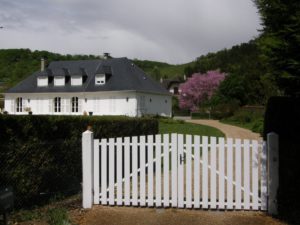Glass is a fascinating material that has been used for thousands of years to create beautiful objects, from delicate glassware to towering skyscrapers. It is a transparent, hard, brittle, and often fragile substance that is made by heating silica or sand to very high temperatures.
The history of glass can be traced back to ancient civilizations such as the Egyptians, Romans, and Greeks, who all used it for various purposes. The Egyptians, for example, used glass to make beads, jewellery, and small figurines, while the Romans used it for architectural purposes such as windows and mosaics. The Greeks also used glass for decorative objects, such as vases and urns.
Today, glass is used for a wide range of applications, from building construction to consumer products. One of the most popular uses of glass is in windows, where it is used to allow natural light into buildings while also providing insulation. Glass is also commonly used for mirrors, lenses, and camera lenses.
There are many different types of glass, each with its own unique properties and uses. Here are some of the most common types of glass:
- Float glass: Float glass is the most common type of glass used in construction and architecture. It is made by pouring molten glass onto a bed of molten tin, which produces a flat and smooth surface. Float glass is clear and transparent, and can be tinted or coated with reflective films for energy efficiency.
- Tempered glass: Tempered glass is a type of safety glass that is four to five times stronger than regular glass. It is made by heating float glass to a very high temperature and then rapidly cooling it. This process makes the glass very tough and shatter-resistant, which makes it ideal for use in windows, doors, and shower enclosures.
- Laminated glass: Laminated glass is another type of safety glass that is made by sandwiching a layer of polyvinyl butyral (PVB) between two or more layers of glass. The PVB layer holds the glass together if it is broken, which makes it ideal for use in car windshields and buildings where safety is a concern.
- Frosted glass: Frosted glass is made by etching or sandblasting one side of a glass pane to produce a matte or roughened surface. It is commonly used in shower enclosures, privacy screens, and decorative glass panels.
- Tinted glass: Tinted glass is made by adding small amounts of metal oxides to the glass during the manufacturing process. This gives the glass a coloured tint that can help reduce glare, heat, and UV radiation.
- Mirrored glass: Mirrored glass is made by applying a reflective coating to one side of a glass pane. This creates a mirrored surface that can be used for decorative purposes, as well as for reflecting light and creating an illusion of space in small rooms.
- Insulated glass: Insulated glass is made by sandwiching a layer of air or gas between two or more glass panes. This creates an insulating barrier that helps reduce heat loss and noise transmission, making it ideal for use in windows and doors.
- Glass-ceramic: Glass-ceramic is a type of glass that has been heat-treated to produce a crystalline structure. It is very durable and heat-resistant, which makes it ideal for use in cookware, fireplace doors, and high-temperature applications.
- Bulletproof glass also known as ballistic glass, is a type of glass that is designed to resist penetration from bullets or other projectiles. It is made by laminating multiple layers of glass with a thermoplastic interlayer, which absorbs the impact of the bullet and prevents it from passing through.
- Technical glass refers to a wide range of specialty glasses that are designed for specific industrial or scientific applications. These glasses can be customized to meet specific requirements for properties such as thermal conductivity, chemical resistance, and optical clarity.
- Photovoltaic glass is a type of glass that is designed to convert sunlight into electricity. It contains thin layers of photovoltaic cells that can generate electricity when exposed to light, making it an ideal material for use in solar panels, building facades, and other applications where renewable energy is desired.
These are just a few of the many different types of glass available today. Each type of glass has its own unique properties and uses, and can be customized to meet specific requirements for strength, clarity, and energy efficiency.





Be First to Comment